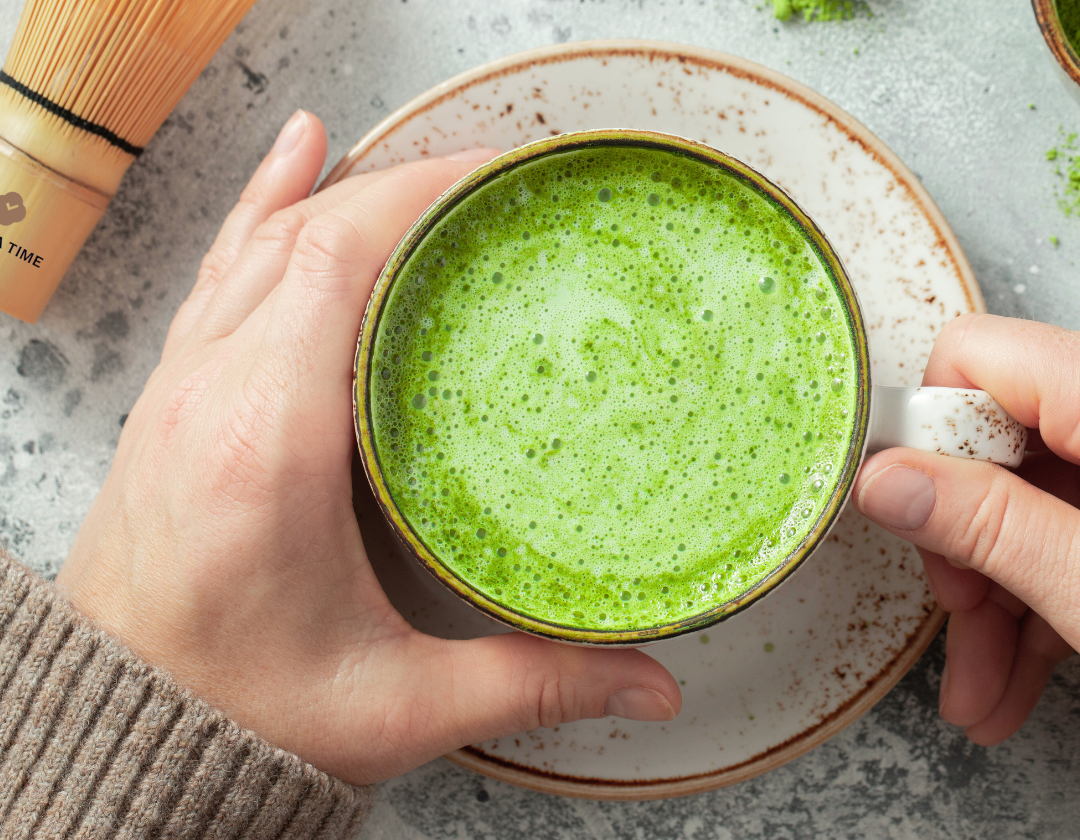You will not be allowed to compare more than 4 products at a time
View compare
Why Matcha?
And Why Now?
In a world that moves too fast, matcha is more than just a
drink—it’s a ritual. A moment of mindfulness. A way to reconnect with yourself
while nourishing your body with antioxidants, gentle caffeine, and the calming
energy of L-theanine. Unlike coffee, which jolts and crashes, matcha carries
you smoothly through the day, giving you focus, clarity, and balance.
Beyond the cup, matcha is a creative ingredient—a touch of
earthy vibrance in lattes, smoothies, desserts, and even skincare. It’s a
trend, yes, but one rooted in something far deeper: wellness, longevity, and
the pursuit of something pure.
Because in the rush of life, there’s always time for Matcha Time
Why Matcha Time?
In today’s fast-paced world, Matcha Time is about slowing down and savouring the moment. Whether it’s a morning boost, a creative escape, or a self-care ritual, our matcha transforms any moment into something intentional, refreshing, and uplifting.
A Better Alternative to Coffee
Gentle, Sustained Energy
Thanks to L-theanine, matcha delivers calm focus and steady energy throughout the day.
Rich in Antioxidants
Matcha is packed with antioxidants that support overall wellness and promote healthy aging.
What does matcha taste like
High-quality matcha tastes savory-sweet, vegetal and refreshing. Some blends can be marked by nutty, roasted notes, while others can be floral in flavor. High grades of matcha contain more of savory ‘umami’ notes characteristic of shade-grown green tea, and only hints of bitterness, with a long finish that revs on for a few minutes on your palate.
How is matcha prepared?
Modern Rituals for Everyday Enjoyment
At Matcha Time, we celebrate the versatility of matcha beyond tradition. Our premium matcha, sourced directly from our plantations in China, is finely stone-ground and perfect for a wide range of uses—from quick morning lattes to vibrant smoothie bowls and even desserts.
Whether you whisk it with hot water, blend it into your favourite milk, or bake it into cakes and cookies—matcha is what you make it.
How do I determine the quality of matcha?
While it’s not typically easy to determine the matcha quality simply by looking at the label alone, there are four main “sensory cues” one can use to assess the quality of matcha: color, texture, aromas, and taste.
- Colour: Premium matcha has a vibrant, deep green hue with a slight blue undertone—never dull, yellowish, or grey.
- Texture: It should feel incredibly fine and smooth, like talcum powder, with particles averaging around 8 microns.
- Aroma: Expect a fresh, sweet, and creamy fragrance—inviting, with notes of umami and soft grassiness.
- Taste: When properly whisked, high-grade matcha is smooth and mellow, with no bitterness or harsh astringency—just a rich, balanced flavour.
Why is matcha so vividly green?
Matcha’s vibrant green colour comes from a shading process before harvest, which boosts chlorophyll levels in the leaves. After harvest, the leaves are lightly steamed to lock in that bold, electric green hue—preserving both the colour and the nutrients.
Where is Matcha Time matcha sourced?
Same Traditions, Exceptional Origins
While Japan is well known for matcha, China is actually the birthplace of green tea—with tea cultivation dating back thousands of years. Our matcha is sourced from carefully selected high-altitude tea farms in China, where the climate, soil, and farming expertise produce vibrant, high-quality leaves.
We apply Japanese stone-grinding techniques and follow strict harvesting and steaming processes to ensure the same smooth taste and frothy texture you’d expect from top-grade Japanese matcha—at a more accessible price.
It’s the best of both worlds: ancient Chinese tea wisdom + modern matcha excellence.
What is L-theanine?
L-theanine is a rare amino acid found naturally in just a few plants—most notably in tea. Our matcha, grown in the highlands of China, contains up to five times more L-theanine than regular green tea.
This unique compound promotes the production of alpha brain waves, helping to create a state of calm focus—relaxing the mind without making you drowsy. It's the secret behind matcha's smooth, balanced energy.
Why is matcha sold in small quantities?
Once opened, matcha begins to oxidise, which can affect its colour, flavour, and freshness. Smaller packaging helps you enjoy it at its peak quality before it starts to degrade. For the best taste and benefits, we recommend buying smaller amounts more often.
Why is matcha more expensive than other teas?
A labour of care—from harvest to grind, every step matters.
Matcha isn’t just another green tea—it's a ceremonial-grade experience that requires precision and patience at every stage.
At Matcha Time, we source only the youngest, shade-grown leaves from the first spring harvest, when the tea is at its most flavourful and nutrient-rich. These leaves are hand-picked, then carefully de-stemmed and de-veined, keeping only the softest, most potent parts.
Unlike traditional loose-leaf teas, matcha is stone-ground into an ultra-fine powder—a slow, delicate process that can take an hour to produce just 20g. The result is a vibrant, smooth matcha with deep flavour and high nutritional value.
Because every gram is crafted with precision, matcha naturally commands a higher price—but also delivers a far more refined, full-bodied experience in return.



